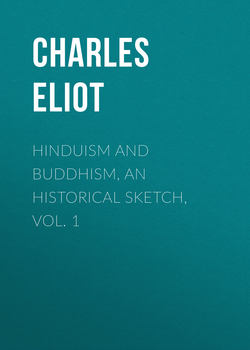Читать книгу Hinduism and Buddhism, An Historical Sketch, Vol. 1 - Charles Eliot - Страница 22
BOOK I
INTRODUCTION
22. The Worship of the Reproductive Forces
ОглавлениеOne aspect of Indian religions is so singular that it demands notice, although it is difficult to discuss. I mean the worship of the generative forces. The cult of a god, or more often of a goddess, who personifies the reproductive and also the destructive powers of nature (for it is not only in India that the two activities are seen to be akin) existed in many countries. It was prominent in Babylonia and Asia Minor, less prominent but still distinctly present in Egypt and in many cases was accompanied by hysterical and immoral rites, by mutilations of the body and offerings of blood. But in most countries such deities and rites are a matter of ancient history: they decayed as civilization grew: in China and Japan, as formerly in Greece and Rome, they are not an important constituent of religion. It is only in India and to some extent in Tibet, which has been influenced by India, that they have remained unabashed until modern times.
If it is right to regard with veneration the great forces of nature, fire, sun and water, a similar feeling towards the reproductive force cannot be unphilosophic or immoral. Nor does the idea that the supreme deity is a mother rather than a father, though startling, contain anything unseemly. Yet it is an undoubted fact that all the great religions except Hinduism, though they may admit a Goddess of Mercy—Kuan-yin or the Madonna—agree in rejecting essentially sexual deities. Modern Europe is probably prudish to excess, but the general practice of mankind testifies that words and acts too nearly connected with sexual things cannot be safely permitted in the temple. This remark would indeed be superfluous were it not that many millions of our Hindu fellow-citizens are of a contrary opinion.
Such practices prevail chiefly among the Śâktas in Bengal and Assam but similar licence is permitted (though the theoretical justification and theological setting are different) in some Vishnuite sects. Both are reprobated by the majority of respectable Hindus, but both find educated and able apologists. And though it may be admitted that worship of the linga may exist without bad effects, moral or intellectual, yet I think that these effects make themselves felt so soon as a sect becomes distinctly erotic. Anyone who visits two such different localities as Kamakhya in Assam and Gokul near Muttra must be struck with the total absence in the shrines of anything that can be called beautiful, solemn or even terrible. The general impression is of something diseased, unclean and undignified. The figure of the Great Goddess of life and death might have fired81 the invention of artists but as a matter of fact her worship has paralyzed their hands and brains.
Nor can I give much praise to the Tantras as literature82. It is true that, as some authors point out, they contain fine sayings about God and the soul. But in India such things form part of the common literary stock and do not entitle the author to the praise which he would win elsewhere, unless his language or thoughts show originality. Such originality I have not found in those Tantras which are accessible. The magical and erotic parts may have the melancholy distinction of being unlike other works but the philosophical and theological sections could have been produced by any Hindu who had studied these branches of Indian literature.
81
It does not seem to me to have given much inspiration to Rossetti in his Aatarte Syriaca.
82
But in justice to the Tantras it should be mentioned that the Mahâ-nirvâṇa Tantra, x. 79, prohibits the burning of widows.
